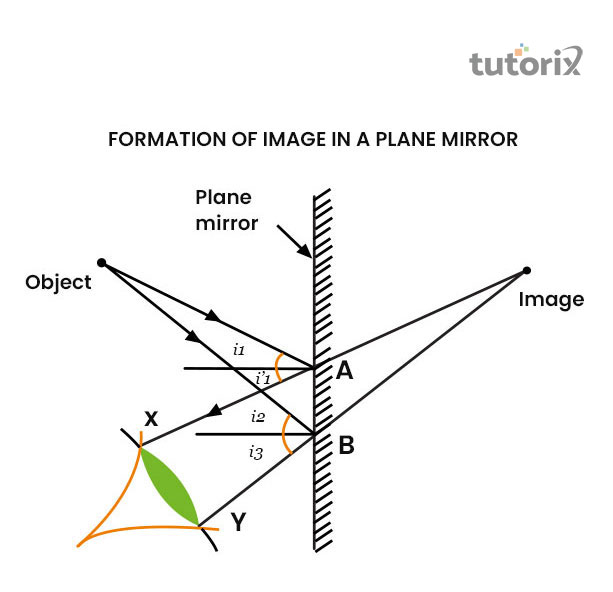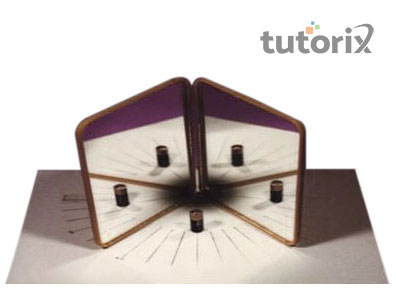

Light is known as the form of energy which can reflect sometimes, based on the objects it falls on. In some cases, objects like mirrors or any type of metal that is polished can reflect the light. Moreover, it also occurs only when the rays of light reflect on a surface and reverses the direction. Electromagnetic radiations are an example of light reflection that occurs when the waves encounter a boundary of the surface which does not absorb the energy and results in a reflection of the waves of light.

Figure 1: Reflection of light
The ray of light that falls on an object can cause a reflection of light. Depending on the type of objects on which the light is, falling can cause reflection. The type of objects on which the light falls can be varied from wild, to smooth, or it can be shiny. Based on this surface, the objective is reliable to bounce the lights back to the source; moreover, it can form an image through the reflection on a shiny material (Shaalaa, 2022).
Based on the law of light reflection, it can be stated that the ''angle of incidence and reflection are equal''.
The uniform and non-uniform process of light reflection on the surface is reliable to construct the image. Moreover, on the uniform surfaces, the reflection processes the angle of reflection and the incident as equal value.
Once the light is reflected in, the rays where the location of images is beginning to diverge. The point of the reflection is covered in the image point. Additionally, the light passes via the background of the real image. In order to view the image, the observer needs to make a line with the location of the image to view the image that is formed by the light ray reflections.

Figure 2: Diagram of the reflective image
The followings are the two different types of reflections are there in science:
A regular reflection is primarily known as a mirror-like contemplation. In this case, the rays of light that are arriving from an entity will be dropping on an object which is soft as well as shiny like a mirror and then standing reflected at a substantial angle. Here, as per the approach of reflection, both the incidence angles and ''angles of reflection'' will be identical to each other (Ask.learncbse, 2022). Thus, the formation of a clear image is possible through the reflection and creation of an identical object. This is due to the light falling on an object which is shiny and smooth as well.
The type of reflection that is not similar to the mirror reflection and the rays can be founded by falling on an object which is possessing through a rough surface like the surface of the water. In this case, the surface will direct the reflection of light to all the directions that are possible to reach (Grossman & Bruce, 2018). Additionally, the irregular reflection will not make the angle of reflection and incident equal. Consequently, the formed image will be blurry.
In the circumstance, when two or multiple mirrors or any other shiny objects are lying at the same angle from the same or different directions it can construct the multiple images. Additionally, multiple images can be formed by placing two mirrors in front of others and also and is placed in between the two mirrors with the presence of light (Teachoo, 2022). Hence, the mirror images will continuously make the sequence by the reflection of lights. The multiple images can be calculated by applying the following formula:
''Number of Images = (360/Angle) – 1''. Hence, placing the mirrors at the 30° angle will represent 11 images by the reflection of light.

Figure 3: Reflection of images by placing mirrors
A mirror is reliable to create two distinct types of images, real and virtual images. In a situation, where the light comes from any single source, it can spread out and passes via the lens for reflection. This situation is reliable to create a virtual image. When light descends on a mirror, the image will consistently arise to be behind the mirror, but this is unbelievable since the light does not depart via the image though it is reflected. On the other hand, the real images are formed in the situation, where the lights meet the images directly (Hiranyachattada et al. 2021). The concept of real images is occurred by the formation of the rays without any help from an object that is helping reflection.
In this tutorial, the significance of the light waves has been observed in viewing the image formed by the reflection. The reflection of the light rays is forming a more critical view by placing a shiny object to make the reflection easy. The law of reflection is followed by light every time. The process is measured through regular and irregular reflection expressions.
Q1. What is the reflection of light?
The way rays of light approach a smooth and polished surface, the ray can bounce back in the reflection of light. The variation of images is reliable on the objects where the light is falling.
Q2. What is interference?
The interference of the spectacle in which two waves make the appearance to results in decreasing the waves and making more elevated amplitude.
Q3. What is the law of reflection?
The principle of light rays that fall upon a surface that is smooth, and the reflective angle is equivalent to the incident angle. The reflection of light has followed the normal surface and plane.
Q4. What is regular reflection?
The principle of reflection is creating a ''clear and sharp reflection'' is referred to as the regular reflection. A glass or mirror which is created by a ''uniform layer'' is more adequate for reflection.
Grossman, I. J., & Bruce, P. J. (2018). Confinement effects on regular–irregular transition in shock-wave–boundary-layer interactions. Journal of Fluid Mechanics, 853, 171-204. Retrieved from: https://www.cambridge.org
Hiranyachattada, T., Kusirirat, K., Kamolchaipisit, K., & Jaiboonlue, P. (2021, December). Demonstration of light reflection concepts for rendering realistic 3D tree images. In Journal of Physics: Conference Series (Vol. 2145, No. 1, p. 012074). IOP Publishing. Retrieved from: https://iopscience.iop.org
Ask.learncbse, (2022), About reflection light image, Retrieved from: https://ask.learncbse.in
Flasheducation, (2022), About reflection of the light image, Retrieved from: https://flasheducation. [Retrieved on 9th June 2022]
Shaalaa, (2022), About reflection light image, Retrieved from: https://www.shaalaa.com [Retrieved on 9th June 2022]
Teachoo, (2022), About Reflection of light, Retrieved from: https://www.teachoo.com [Retrieved on 9th June 2022]